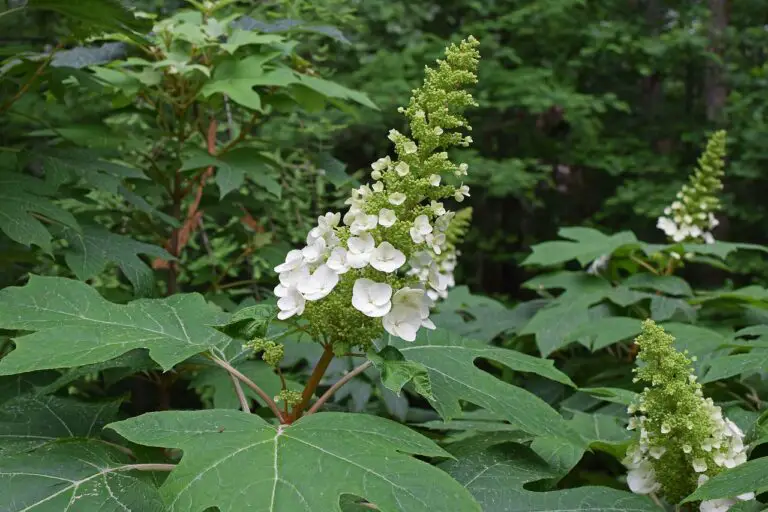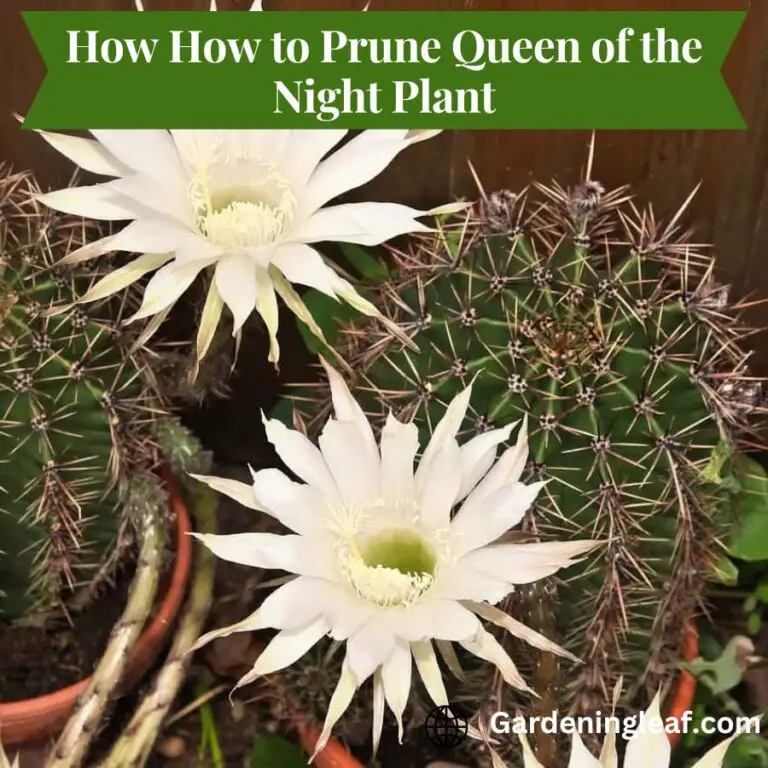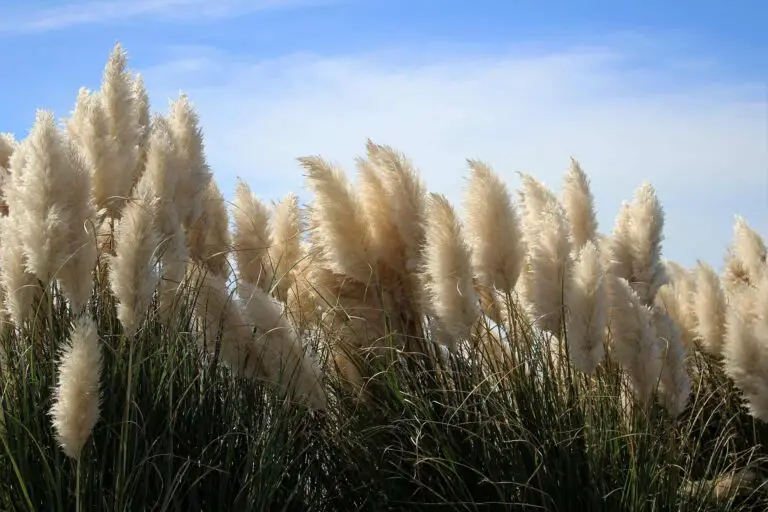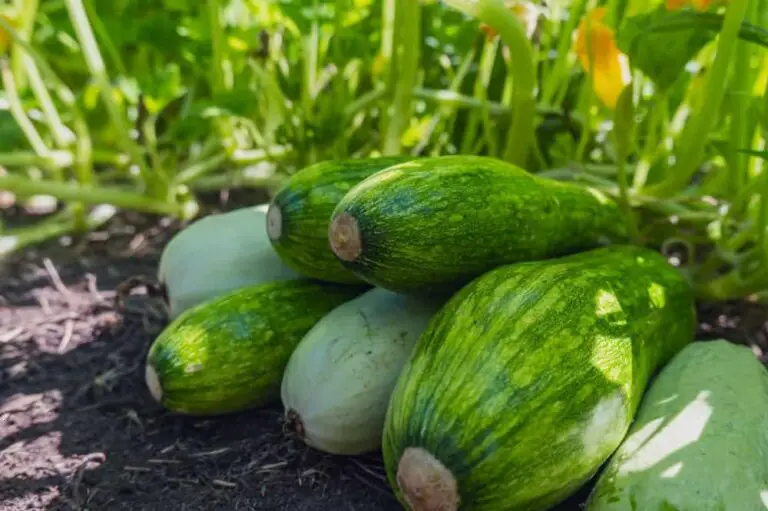How to prune curry leaf plant: 5 easy steps
When cooking regional Indian dishes, certain ingredients cannot be substituted. Curry leaves are one such ingredient. Their unique flavor and aroma elevate any dish they are added to. For those fortunate enough to own a curry leaf plant in their kitchen garden, the importance of readily available fresh, fragrant leaves cannot be overstated. Its also known as murraya koenigii, kaloupilé, and other names, is an Asian shrub.
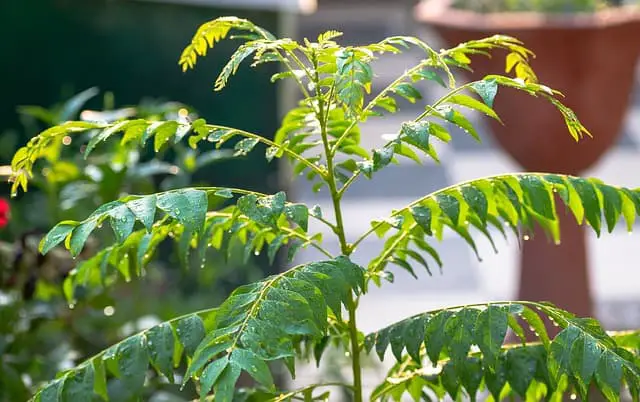
Its native region is India, Sri Lanka, Myanmar, Turkey, Australia other tropical areas. This plant is highly prized not just for its use as food but also for its medical qualities.
But, like any plant, curry leaf plants need regular maintenance to ensure Their growth. A critical aspect of caring for your curry leaf plant is pruning.
Pruning your plant not only keeps it looking neat. But also promotes healthy growth and can even improve the flavor of the leaves.
This blog post will explore How To Prune Curry Leaf Plant and share tips and tricks to help you get the most out of your plant.
Read More :- The Ultimate Guide To Pruning Your ZZ Plant: Tips And Tricks
How To Prune Curry Leaf Plant

If you are lucky to have a curry leaf plant in your house, you should treat it well. So that you always have access to fresh leaves.
Pruning is a crucial part of curry leaf plant maintenance. Once your curry plant reaches a height of at least 12 inches, it’s time to start pruning it.
If your plant is more than three years old or has many branches, try harvesting the leaves from the top by gently pinching the stem off around 3-5 inches deep.
This technique allows you to collect fresh curry leaves for your cooking and naturally encourages the plant to grow new side branches. As the plant grows new branches, you can continue to pinch off the top leaves to promote further growth and a bushier plant.
Just be sure to handle the plant carefully and use sharp, clean tools for pruning to avoid damaging it. We’ll show you how to trim a curry leaf plant so that it thrives.
Learn the basics of how to prune.
Before starting, prune your curry plant. It’s important to understand why pruning is necessary and what it can do for the plant. Pruning is a technique in horticulture removing plant parts. It enhances growth and forms a desired shape.
Pruning helps your curry leaf plant in producing more leaves. By pruning, you can not only remove diseased or dead plants. Yet, it also improves the plant’s potential for survival.
Choose the Right Time to Prune
Before it grows, new leaves in the growing season are the ideal time to prune your curry leaf tree. This helps the plant to devote its energy to generating new growth.
If necessary, you can also prune your curry tree in the autumn. But Avoid pruning during the summer. This might cause undue stress and make the plant more susceptible to attack by harmful microorganisms such as insects and diseases.
Gather Your Tools
Before pruning secure, you have the right tools. You’ll need a clean pair of pruning shears or scissors, gloves to protect your hands, and a container to collect the trimmed leaves and branches. To protect the plant from harm, you must ensure that your instruments are sharp and clean.
Identify the Parts of the Plant to Prune
When pruning your curry leaf plant, remove any deceased or drainage branches or dead or dying leaves. Cut Off any dry, dull, or yellow leaves on the plant.
Lastly, cut off any portions of the plant developing in an undesirable direction. Look for branches that are intertwining, too close together, or developing at an unusual angle. In addition, you can cut off the ends of the branches to stimulate the plant to develop additional leaves by doing so.
Prune the Plant Carefully
always make clean cuts just above a healthy bud or leaf. Take caution not to cut into the woody part of the stem, as this can cause damage to the plant.
Remove all stubs while pruning. Stubs can attract pests and diseases which may harm your plants. Take your time when you prune, and ensure each cut is well-placed and executed carefully.
After pruning, apply a fungicide to each cut branch to prevent fungus growth. This will help protect the plant from diseases.
Dispose of the Trimmed Material
Once you’ve finished pruning your curry leaf plant, it’s important to dispose of the trimmed material with alcohol or bleach.
Remember to prune carefully, never removing more than 20% of the plant at a time. With a little practice, you’ll become an expert at pruning your curry leaf plant and enjoying fresh, fragrant leaves in your cooking.
Read More :- How To Prune A Snake Plant – The Quick & Easy Way
After Punning care of the curry leaf plant
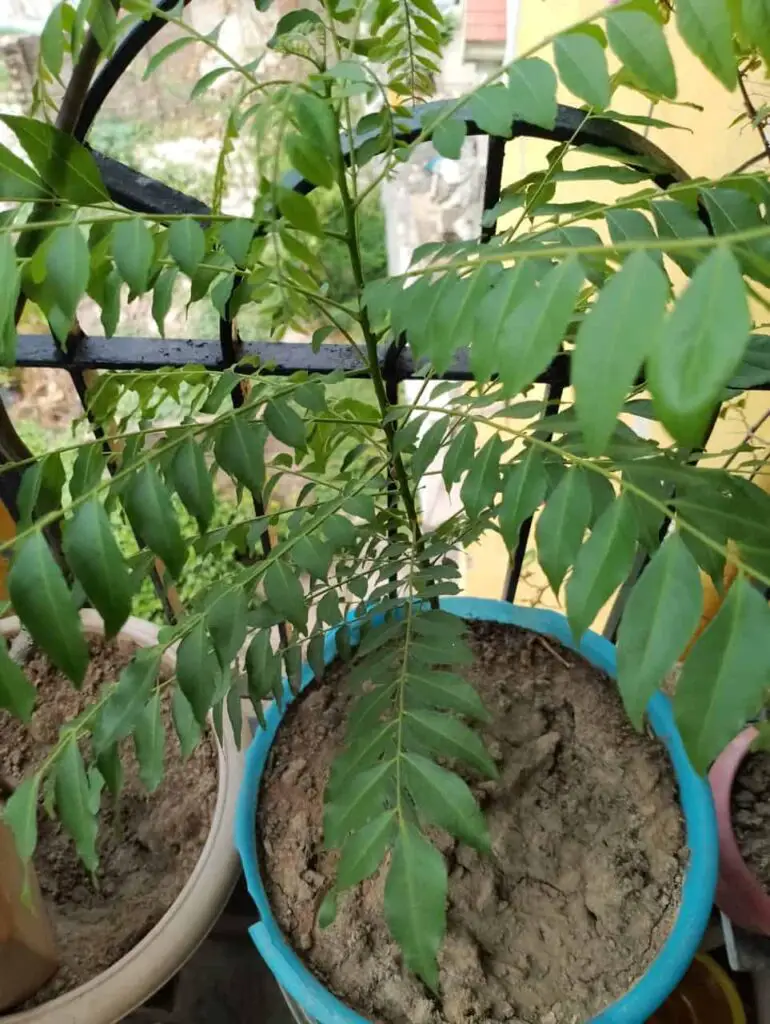
Like any other plant, the curry leaf tree requires proper care to survive the after-punning shock. The plant will recover quickly from the shock if given the correct care.
Water the plant: After pruning, it may lose some leaves and undergo stress. To help it recover, give the plant a good watering to ensure it stays hydrated. But avoid overwatering.
Overwatering can result in root rot, ultimately leading to the plant’s death. In addition, pests of all kinds might be drawn to the standing water. So, you should only water your plants if they require it.
Fertilize the plant: Fertilizing the plant after pruning can help promote new growth. To promote the growth of leaves, treat the plant with either a complete fertilizer or a liquid fertilizer high in nitrogen. Use an NPK 20-20-20 fertilizer if you want to use organic fertilizers. Use compost.
Monitor for pests and diseases: When a plant is pruned, it may sustain wounds, making it more vulnerable to attack by various insects, diseases, and fungi. Therefore, keeping a close eye on your plant and watching for any signs of infestation or infection is crucial. Should you identify any issues, it’s best to act quickly to minimize damage to your plant.
Provide proper light and temperature: Provide the plant with adequate sunlight and good air circulation. Place the plant ware get plenty of sunlight, and avoid placing it in a drafty area.
Read More : –How To Prune Pampas Grass : The Perfect Solution
Different types of curry leaf plant prune techniques
Regular pruning:
Regular pruning is an important technique for maintaining the health and appearance of a curry leaf tree. It involves removing any dead, damaged, or diseased branches regularly.
Pruning keeps the plant in the desired shape and size and prevents it from overgrowing.
Pinching:
Pinching, a common pruning technique involves using your fingers to nip off the tips of a plant’s stems. By pinching off the top leaves of a curry leaf plant, you remove the apical dominance or the part of the stem that controls the plant’s growth.
This process stimulates the side branches to grow fresh, resulting in a lusher and more compact plant. You can promote your curry leaf plant’s fuller and bushier appearance with pinching.
Thinning:
Thinning is one of the most significant pruning techniques for curry leaf trees. It allows more light to enter the plant’s interior while contributing to better air circulation.
By removing some branches. You can create a more open, less disease-prone structure that promotes healthy growth.
Make sure the equipment you use for pruning is sharp and clean. So you don’t harm the tree. Also, remove any dead or diseased branches first.
Cut off branches crossing or rubbing against each other and those growing inward toward the tree’s center. To avoid the plant from being stressed, you should never remove more than a third of its entire leaf at one time.
Strong pruning and cleaning:
Revitalizing an overgrown or sick curry leaf tree requires a strong pruning and cleaning approach. This involves a severe cut of the plant, sometimes cutting back to just a few inches of the main stem above the soil.
Even if this can appear like an extreme solution. It frees up the plant’s resources to use them to develop new shoots and recover its health. The curry leaf tree can fully recover by redirecting its resources toward rejuvenation.
During strong pruning, removing any diseased or damaged branches is important. They can hinder the plant’s recovery. Once the pruning is complete, the tree may look bare and lifeless. If you give attention, care, and patience, it will develop new shoots in a few weeks.
Crown reduction:
Crown reduction is a necessary technique to maintain the structural integrity of the curry leaf tree. Expertly pruning back the branches at the top of the tree reduces the canopy’s size. Preventing the tree from becoming too heavy and falling over during high winds.
Moreover, this technique enhances the tree’s aesthetic appeal and promotes healthy growth. Crown reduction sho pruning back the branches at the top of the tree reduces the canopy’s size.
It’s very important to remember that only experienced gardeners or tree care pros should make a crown reduction. If it doesn’t do properly, its a harm tree.
Read More :- How Can You Propagate Cilantro: Tips And Tricks
Benefits of pruning a curry leaf plant.
1. Encourages Growth
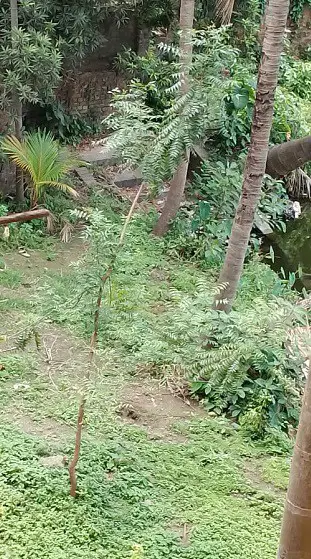
Pruning your curry leaf plant promotes healthy growth. When unhealthy or damaged leaves are removed, the plant can direct its energy into new development.
Pruning also helps shape the plant, ensuring it grows healthily and uniformly. Regular pruning can keep your curry leaf plant looking lush and vibrant.
2. Increases Yield
Pruning your curry leaf plant can also increase its yield. By removing the older leaves, the plant can direct its energy into producing new leaves.
3. Prevents Disease
Pruning your curry leaf plant can help to prevent disease. By removing dead or diseased leaves. You prevent the spreading of bacteria or fungi that can harm the plant.
When pruning the plant, It will get more air circulation and sunlight. It also prevents the accumulation of moisture and minimizes the danger of infection.
4. Improves Appearance
Pruning your curry leaf plant can improve its appearance. You can maintain the plant’s healthy appearance and keep it beautiful and clean by removing sick or dead leaves. Pruning also helps shape the plant, ensuring it grows healthily and attractively.
5. Easier Harvesting
Finally, pruning your curry leaf plant can make harvesting easier. By removing older leaves, you make it easier to access the newer leaves that are most flavorful. Pruning can also make reaching the leaves growing at the top of the plant easier.
Read More :- 10 Signs My ZZ Plant Dying And How To Fix It
FAQs
How do I make my curry plant bushy?
To make your curry plant bushy, you can use the pinching technique. Simply pinch off the plant’s top leaves to encourage the growth of new side branches. Because of this, the plant will end up becoming more full and bushy as a result.
Do curry leaves grow back?
Yes, curry leaves can grow back if the plant is properly cared for. Regular pruning, pinching, and renewal pruning can all help stimulate growth. Curry leaf plants are well-known for their remarkable resilience and rapid regenerative abilities.
When should you prune the curry leaf plant?
The optimal time to prune a curry leaf plant is during the growing season, specifically in the early spring and throughout the summer. It’s important not to do any pruning in the winter. This can make the plant stressed, slowing growth or even hurting it. Also, don’t prune during times of very high heat or drought.
When your curry leaf plant is 12 inches tall, cut it back if your curry leaf plant is older than three years or has many branches. The best time to prune is now.
Can curry leaves survive frost?
Curry leaf plants are inherently found in tropical regions. Due to their origin, these plants cannot handle frost and can’t survive temperatures below 32°F (0°C) for long periods. If you live where frost is possible, bring your curry leaf plant indoors or cover it with a protective layer like a frost blanket to keep it safe.
Read More : – 15 Best Ways How To Stop Plant Pots Falling Over In Wind
Conclusion
Proper care and maintenance of your curry leaf plant require pruning. It helps keep the plant healthy and in shape and encourages bushier and faster growth.
Always use sharp, clean pruning tools and follow proper safety measures when pruning your curry leaf tree.
If you supply the proper growing conditions. Such as full sun, proper humidity, manure, and enough room. Curry leaf plants can thrive and produce fragrant leaves, white flowers, and flower buds. Use the above information to learn How To Prune Curry Leaf Plant. And enjoy fresh, aromatic leaves for all your culinary needs.
Source :- https://www.thespruce.com/how-to-grow-and-care-for-curry-trees-5075352


